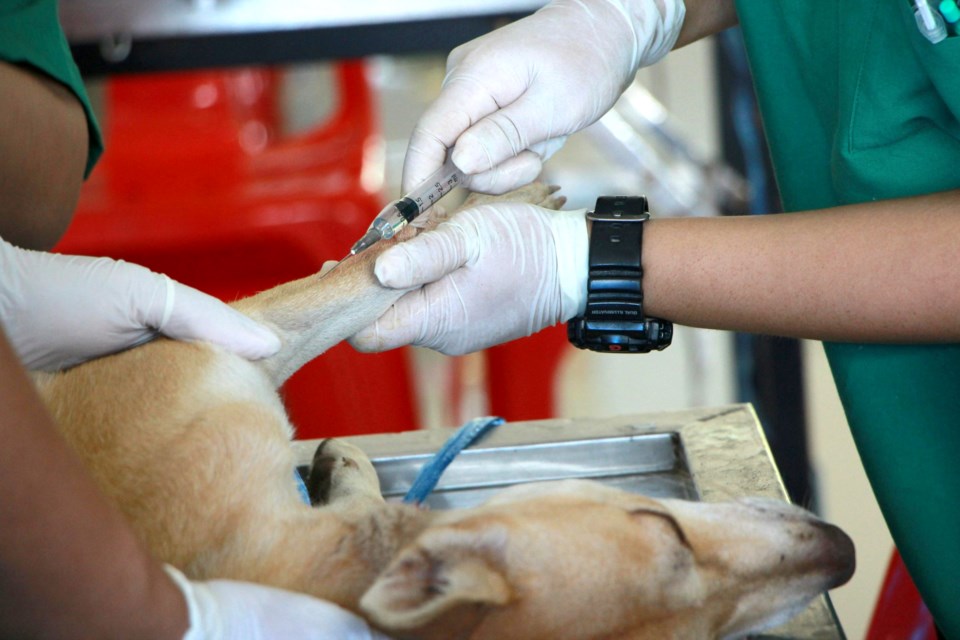Last month in the news, you may have read that Quebec had become the latest province to ban cosmetic surgeries on animals. This is not new to the veterinary world. In fact, most provinces have implemented these bans years ago.
Ontario, however, is the only province yet to implement any such regulations.
Cosmetic surgeries are defined as surgical alteration of any animal for purely cosmetic reasons. Examples of these surgeries include: declawing, dewclaw removal, tail docking and ear cropping.
Tail-docking and ear-cropping practices date back to the Roman Empire where tail docking was initiated to help decrease the spread of rabies, and ear cropping was started to prevent injury during fighting and hunting. The practice continued as a means of preventing injury in working breeds, particularly those used for hunting and herding, preventing ear infections and breed conformity.
Bans on tail docking and ear cropping have been present in the United Kingdom and Europe since the early 2000s and many studies have been performed to look at the incidence rate of tail injuries since the bans were initiated.
The average risk of tail injury in dogs has been found to be between 0.23 per cent and 0.39 per cent in various studies, meaning for every 500 dogs that have their tails docked, it would prevent one injury. The breeds of greatest risk of tail injury (approximately 1.22 per cent) are whippets, greyhounds and lurchers, breeds that do not routinely have their tails docked. Working dogs (predominantly gun dogs) do not have a statistically significant increased risk of tail injury when compared to non-working dogs.
There is no evidence to suggest that ear cropping decreases the risk of ear infections or helps the dog to hear better. It does alter their ability to communicate with other dogs and people. The surgery itself is quite painful and has a high risk of bleeding and infection. In fact, most veterinary surgical textbooks no longer outline the procedure.
On the cat side of things, declawing became popular in the 1950s. it only benefits cat owners by preventing damage to furniture, and injuries to humans. However, what is less well-known is what exactly the declawing procedure is: It is an amputation, or rather multiple amputations of the last knuckle of every digit. Think about having every fingertip removed surgically on both your hands.
It is a painful procedure, even though it is done under anaesthetic and usually with nerve blocks and can lead to chronic pain conditions in the cats and increase incidence of other stress-related conditions, like lower urinary tract disease.
Cosmetic surgeries are acutely and chronically painful, not likely to benefit the welfare of the animal, and can lead to chronic illness and can even alter the animals ability to communicate with each other but also with people.
I will note that these regulations only stop these procedures from being performed for cosmetic reasons, and can be performed if deemed medically necessary and in the best interests of the animal’s welfare. Veterinarians weight the pros and cons of each procedure, and if deemed necessary, will perform them with strict analgesic protocols to prevent discomfort to the pet before, during and after the surgery.
So if these procedures are so bad for animal welfare, why doesn’t Ontario have any regulation against them? We’re working on it!
The Canadian Medical Veterinary Association and the Ontario Veterinarian Medical Association (OVMA) (as well as most veterinary medical associations across the globe) have have statements advocating against cosmetic surgeries for the welfare of animals, and the OVMA is actively lobbying to incorporate a ban on medically unnecessary surgery into the PAWS act (Provincial Animal Welfare Services Act) and bring Ontario in line with the rest of the country and most of the world.
Dr. Courtney Andrews is a veterinarian at Lockerby Animal Hospital, a graduate of the Royal School of Veterinary Studies and dog mom to Argyll and Einstein. Animals & Pets is made possible by our Community Leaders Program.



